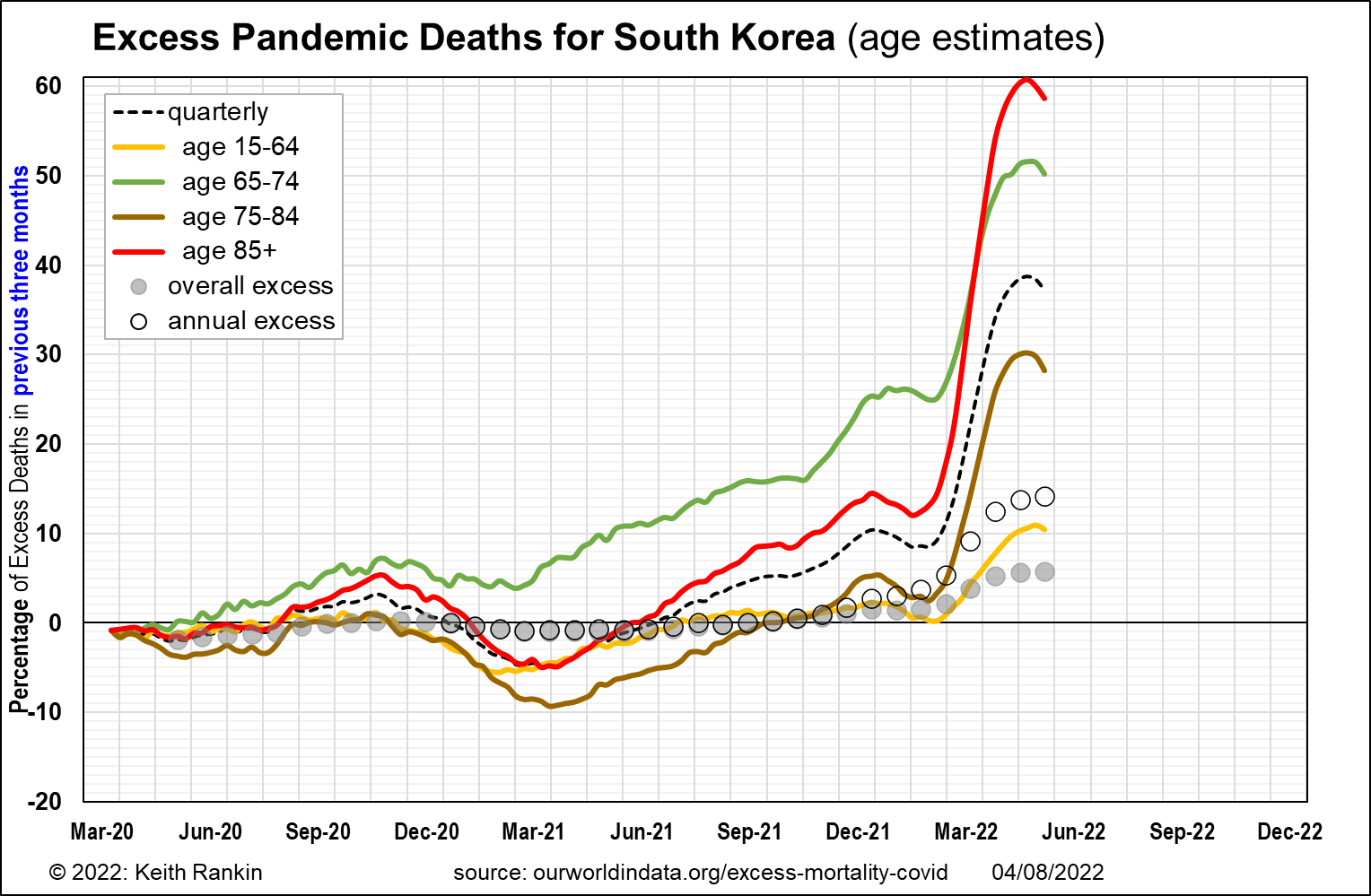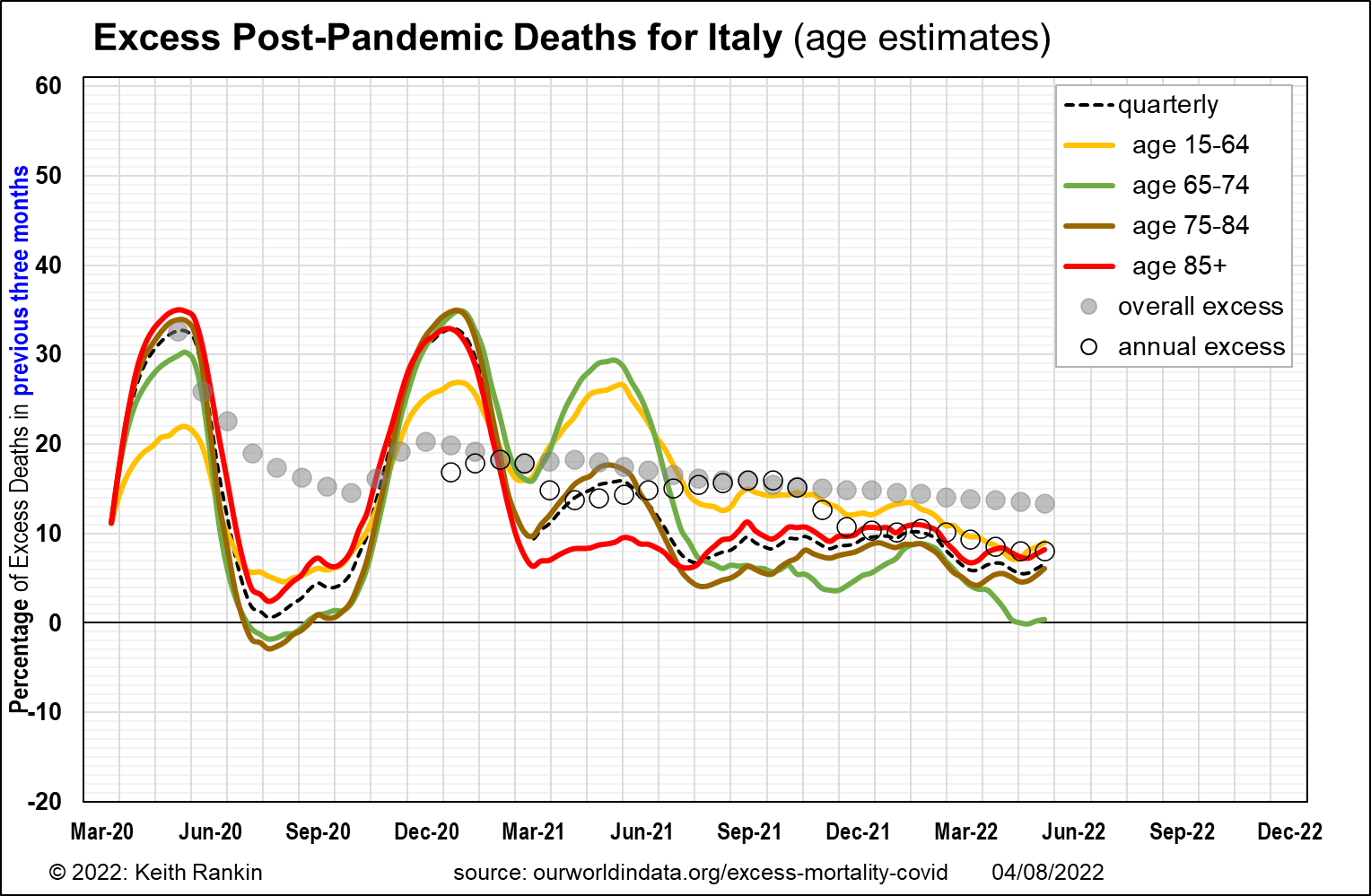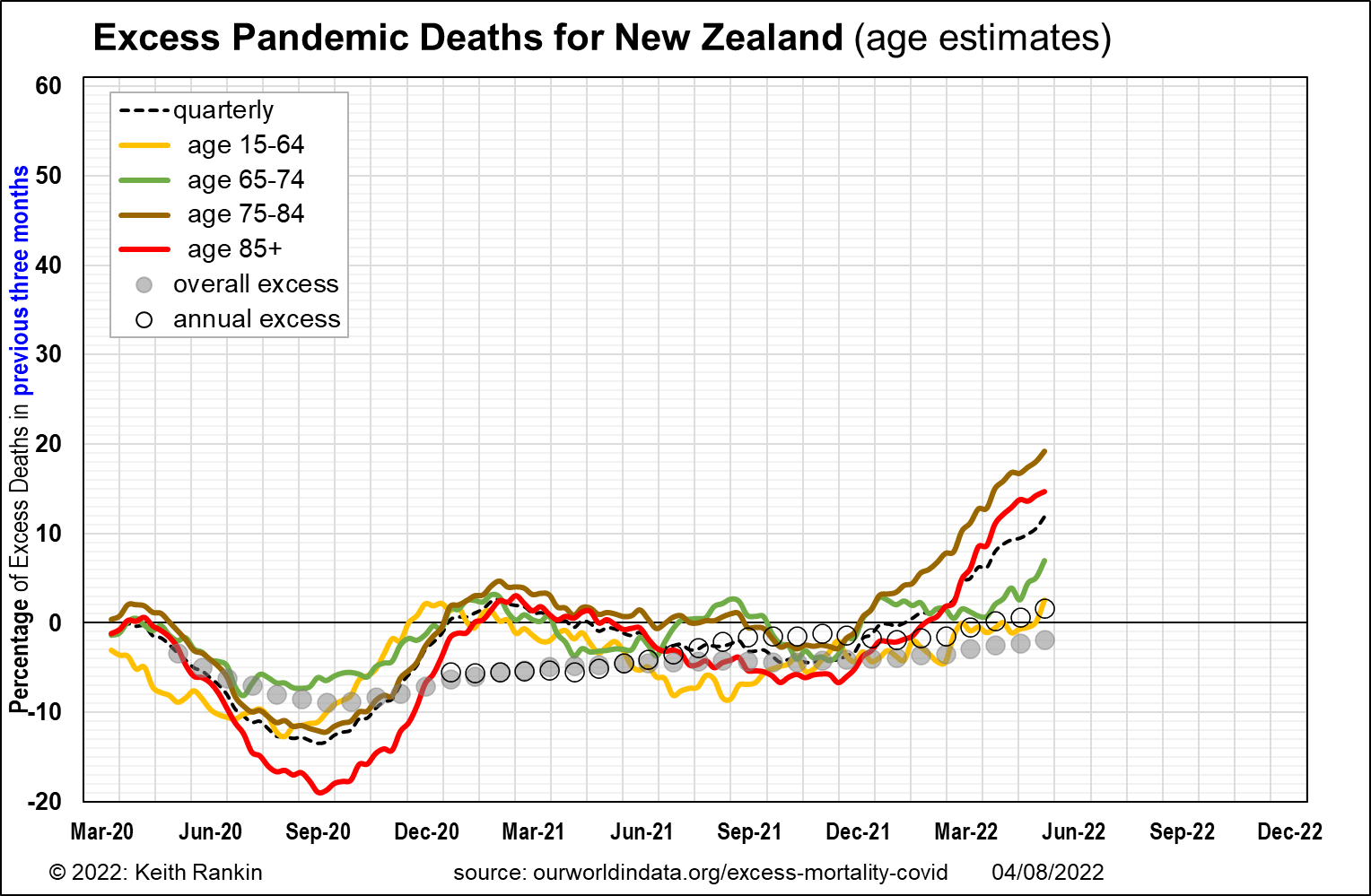Analysis by Keith Rankin.



These three charts show pandemic and post-pandemic excess deaths by age group. I highlight South Korea in light of this RNZ piece of ‘journalism’. For Omicron-related deaths, look for the period from February to May 2022. I include Italy and New Zealand for comparison; Italy and South Korea were – in February 2020 – the most publicised countries other than China in relation to the beginnings of the Covid19 pandemic. (South Korea clearly was much more successful than Italy at suppressing Covid19 in the northern spring of 2020.)
As I understand it, Italy has had substantially less facemask use in the Omicron (2022) phase of the pandemic than has South Korea. New Zealand is somewhere in between, and the eventual cost in lives in New Zealand remains hard to gauge.
The RNZ article also mentioned Japan and Singapore as role models for New Zealand. To follow the ‘exemplar’ countries, look to these charts on Worldometer. (I add populations for each, because the important charts – daily cases, active cases, daily deaths – are not adjusted for population.) I’ll include Republic of China – the second jurisdiction claiming to be the legitimate government of the whole of China, though unofficially named Taiwan – one of Michael Baker’s previously cited exemplars for New Zealand.
- Japan (population of 125,670,000)
- Singapore (population of 5,946,000)
- South Korea (population of 51,361,000)
- Republic of China (population of 23,907,000)
The three countries which I have charted here – South Korea, Italy and New Zealand – all have the same life expectancy at birth: 83 years.
The Korean chart may be distorted by demographics affected by both WW2 and the Korean War hot episode of the ‘Cold War’. People there born from 1945 to 1956 have been dying in substantially excessive numbers through 2021 as well as 2022. While younger people (at least until the Omicron wave) were largely unscathed by the ‘grim reaper’, they would appear to be not immune.
In Italy young people have also been dying at alarming rates, though at declining rates since Omicron has been the dominant variant of covid. In New Zealand, so far, young people have been largely unscathed by the reaper, though they clearly have been substantial amounts of adversity.
My sense is that, as with other countries, the impact of Covid19 in New Zealand on working-age people will eventually show up; and that, whatever facemask protocols New Zealanders follow from now, the harm that will lead to younger people’s death rates will eventually lead to an ‘Italian story’ in New Zealand.
The excess-deaths approach will also pick up non-covid deaths arising from reduced immunity to all forms of respiratory illness. (See my recent One Sari Sari Night.) Probably both Italy and South Korea have already had a significant impact from these other illnesses. Acculturated (see the RNZ article) and excessive facemask use tends to reduce deaths by postponing them. South Korea – and maybe New Zealand too – may be paying a high interest rate.
*******
Keith Rankin (keith at rankin dot nz), trained as an economic historian, is a retired lecturer in Economics and Statistics. He lives in Auckland, New Zealand.








